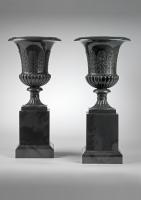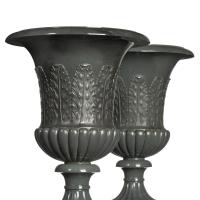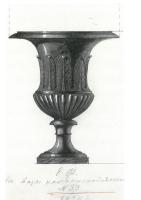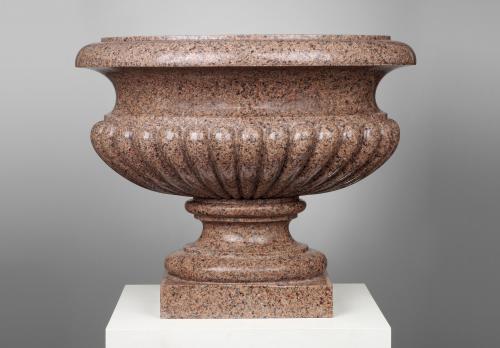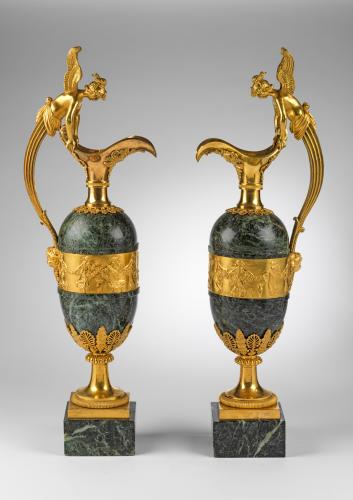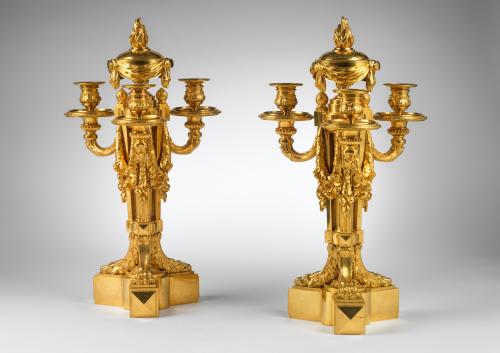
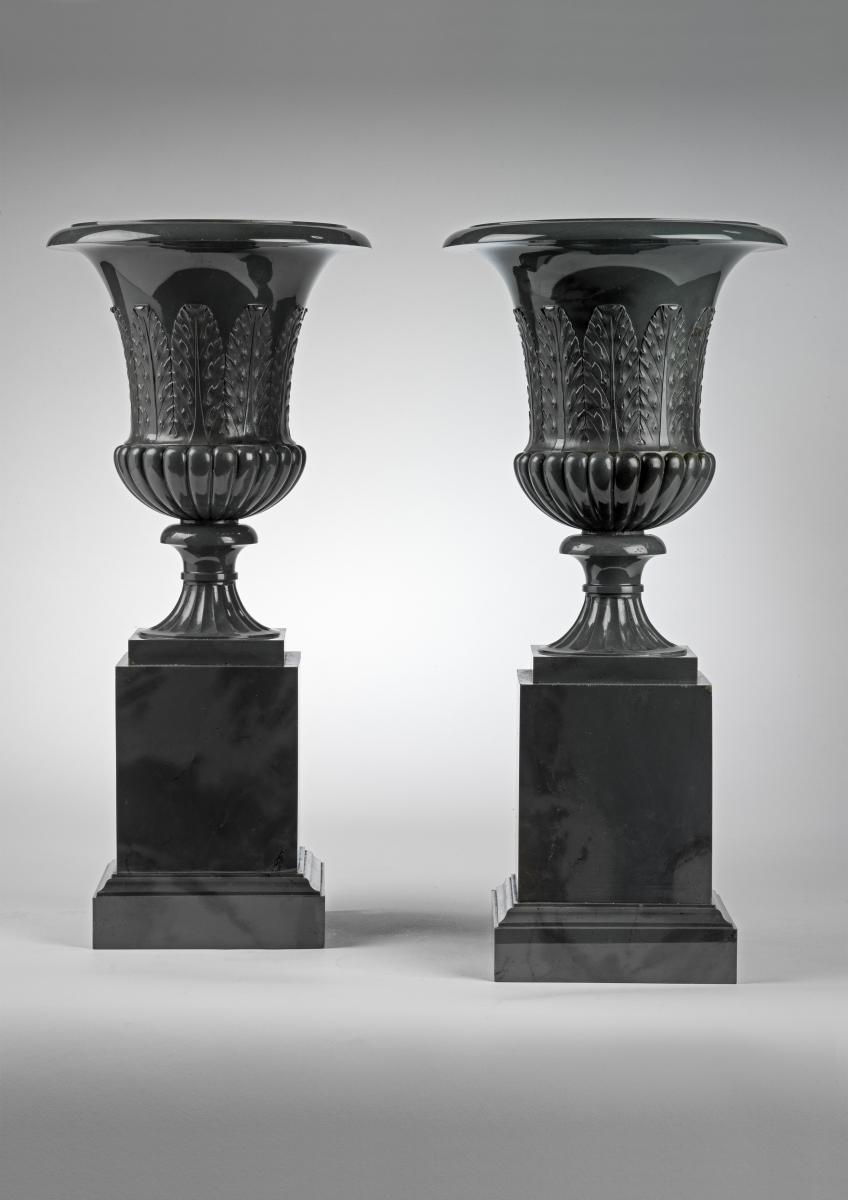
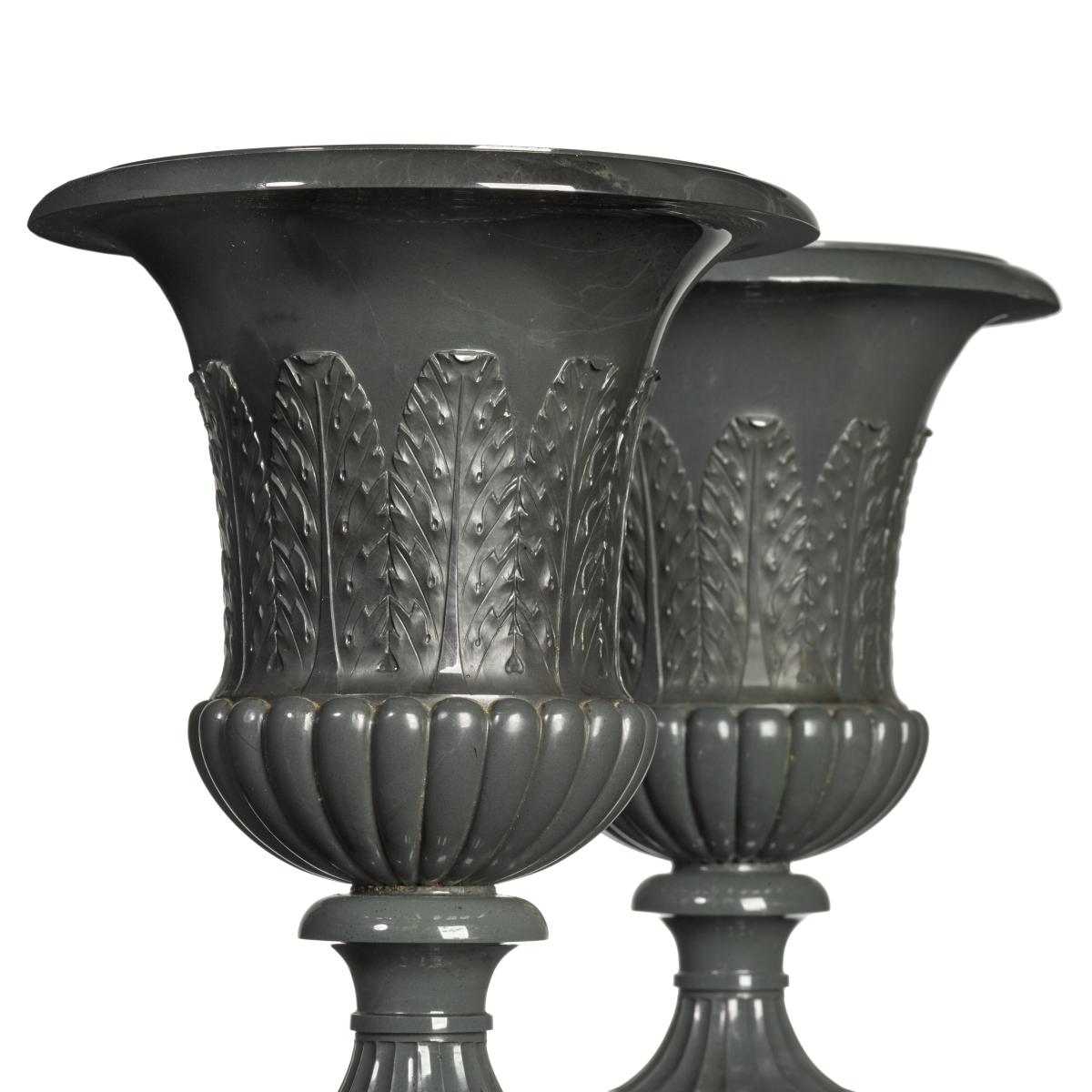
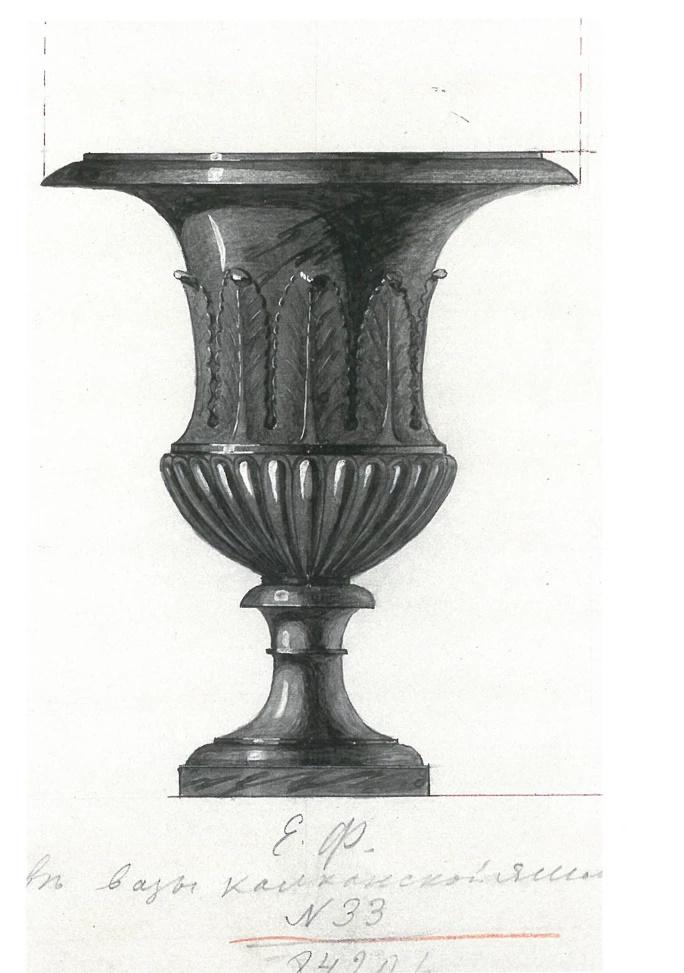
Price on application
This object is eligible for a Certificate of BADA Provenance
The BADA Standard
- Since 1918, BADA has been the leading association for the antiques and fine art trade
- Members are elected for their knowledge, integrity and quality of stock
- Our clients are protected by BADA’s code of conduct
- Our dealers’ membership is reviewed and renewed annually
- Bada.org is a non-profit site: clients deal directly with members and they pay no hidden fees
A Pair of 19th-Century Imperial Russian Kalgan Jasper Vases. Circa 1809 -1875.
Stonecutting in Russia
The Russians were aided by the discoveries of rich deposits of semi-precious stones in the Urals and further east in Siberia. Towards the end of the 18th century, blocks of Korgon, porphyry, rhodonite, Kalgan and Aushkul jasper and Nevianok marble were quarried and sent to St. Petersburg to be cut and polished into objects.
The Imperial government established the first factory at Peterhof, near St Petersburg, in 1721 by Peter the Great, employing Italian craftsmen who trained Russian craftsmen. Subsequently, the administration set up further factories at Ekaterinburg (in 1765) and Kolyvan in the Urals where the locally trained stone cutters could work larger pieces of stone. These vases are a very fine example of Russian craftsmanship at the Imperial Lapidary Works in Ekaterinburg and display the artisans' great skills at cutting and polishingrare stones and marbles. They display the perfection of the polishing work that the craftsmen at the lapidary had achieved in one of the most beautiful materials in the Urals, and particularly of note is the stunning contrast between the matte finish of the acanthus leaves and the polished appearance of the vases' body. In 1802 Count Stroganov presented Tsar Alexander I with a pair of vases in Iamsk jasper with gilt bronze handles in the form of intertwined snakes and a gilt and patinated bronze frieze of bunches of grapes and vine leaves. In 1809 Kokovin who was one of the most talented stone cutters at Ekaterinburg invented a number of pieces of machinery which simplified the cutting and polishing processes and permitted the decoration of vases with details in relief.
These vases closely relate to one drawing that is part of a group of 16 that the factory received in 1863, after which similar works were executed over the following years. This drawing, marked with the letter "F" (GASO, f.86, op. 1., d. 860, p. 30, illustrated in N.M. Mavrodina, Russian carved stone pieces abroad, 2019, p.112, no 243), is a design for a small Medici vase in Kalgan jasper, with gadrooned ornament on the base and one row of vertical acanthus leaves on the main body. From this 1863 drawing, two pairs of vases were created in Ekaterinburg: one in the mid 1860s and the other in the mid 1870s. According to N. M. Mavrodina, a pair of jasper vases following this design (achieved in 1875 and estimated at 4,000 roubles) along with two dishes in rhodonite (achieved in 1894 and estimated at 280 roubles) were acquired in 1905 by the King of Belgium, Leopold II. Perhaps the other pair was in the palace of the Grand Duke Vladimir Alexandrovich (N.V. Borovkov, "Works of the Yekaterinburg Cutting Factory of 1865-1878", in the University Scientific Journal, no. 16, 2015, p. 128).
The stylish design combined with this characterful Russian hardstone - Kalgan grey jasper - results in this highly sophisticated pair, a type highly attractive to visitors in Russia in the mid-19th century. Then, many wealthy travellers completing the Northern Grand Tour, which included Russia, would be dazzled by the hardstone objects in the Hermitage and great aristocratic palaces (see for example the 95cm. high Medici vase in kalgan jasper in the collections of the State Hermitage Museum illustrated in N.M. Mavrodina, The art of Russian stone-cutters of the XVIII-XIX centuries, 2007, p.238, E 76). This large vase is designed after a much earlier drawing, from 1830 by I.I. Galberg and features handles and gadroons on the vase's rim, unlike the present. Related examples, vases in kalgan jasper and of campana shape, though with a fluted body, are in the collections of Chatsworth House (illustrated in The Duchess of Devonshire, Chatsworth: The House, 2002, p.183).
Dimensions
17.5 x 38 cm HighThe BADA Standard
- Since 1918, BADA has been the leading association for the antiques and fine art trade
- Members are elected for their knowledge, integrity and quality of stock
- Our clients are protected by BADA’s code of conduct
- Our dealers’ membership is reviewed and renewed annually
- Bada.org is a non-profit site: clients deal directly with members and they pay no hidden fees


